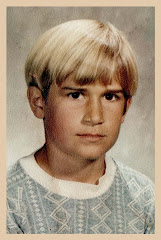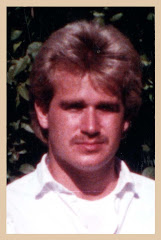Since I have covered the hyper-real technique in earlier posts I thought it might be interesting to chronicle the myriad impression that inspire a creation--what did I draw upon to draws others in.
To start, the concept behind this work comes from a "what if" scenario. Being that everyone is familiar with the Hawaiian culture which invented surfing, I envisioned a cultural juxtaposition within nomadic Native American life--to create the ultimate surfari scenario (hopefully capturing and mirroring an organic experience as exemplified by the Paskowitz family).
I imagined traveling from break to break before the modernization of western culture. Finding a promising spot, setting up camp, cooking the days catch, and falling asleep on a bed of soft pelts, next to a warm fire, and slumbering loved ones.
Then morning wakes you with the solacing thunder of waves breaking. You peek your head outside the tipi as the brine of cool ocean air enters your nostrils. You rub your eyes twice to ensure that the vision of turquoise perfection is not just a dream. You step outside, chose your board, and begin to wax it as you time the sets. Then you rise to your feet and drink it all in. In that moment of repose and mental preparation, you connect to the present in ineffable ways. Today will be special, transformative, epic.
Perhaps that is one of the qualities of big wave surfing--you connect to the present. Everything else fades. The past doesn't exist once you rise to your feet. The future is probed only in terms of split seconds as you judge the wave unfolding before you.
When you kick out, your concept of time expands back to normal parameters. It is then that you typically feel the elation of what transpired. Indeed, in the maelstrom of compressed time, adrenalin, and focus there is little time to process emotion, even the distraction of fear lingers somewhere in the distance. It is a rare experience--many describe it as spiritual. It is different from the rush of other extreme sports, because every wave is unique. It's not like jumping out of an airplane where the parameters remain basically the same every time. It's different from skiing down a mountain, cause the mountain isn't moving. To truly understand it, you have to experience it.
Another deep seated intrigue with surfing is the nomadic experience of "surfari" and how that weaves it's way into the feeling of "tribe", family and friends. It's equally hard to explain the nebulous connection I feel with Native American culture, art, and spirituality. They seem to mirror in mind. Indeed, as I analyze the strands of subconscious thought many images begin to flash.
Growing up I was privileged to have both a Navajo foster brother and sister join our family and live with us for almost a decade. Moreover, many of our family vacations involved visiting reservations and Native American landmarks as we crisscrossed the country. I still remember learning about the great Chief Joseph in Yellowstone Park as a child (probably because we share the same name).
Nevertheless, my first dabbling in Native American motifs, began in high school when making jewelry with my friend James Kanan, (who went on to become a very successful jeweler, and sculptor--see link: www.jameskanan.com ). It was during that time that I developed an affinity for Native American aesthetics (in fact, David is wearing a necklace that I made for him in this picture).
However, my deepest appreciation for Native Americans came unexpectedly during a "ring dance" ceremony at the Sundance Institute Film Makers Workshop in 1988. I don't talk about it much because it was spiritual in nature--let's just say it was strong medicine. Something changed inside me.
As the years passed my connection and appreciation grew and grew--the beauty of tribal community, the art of living off the land, the technology of the tipi, and every shard of philosophy I could garner. However, I wasn't aware how deeply Native American motifs had invaded my creative subconscious until I began designing the artwork for "Chameleon on the Glass". I had no intention of mimicking any motifs, I only new I wanted something mystical, ancient, and organic. As the graphics began to materialized, I kept noticing a semblance to Native American art. Many of those elements made their way into "Native" (like the dream catcher design, eagle feathers, and many others). Obviously, some elements were created specifically for this work, like the Anasazi surfer, and the Wildman/Holyman! symbiotogram, which has an interesting back story.
As is customary in some Native American communities members often receive their names based on personality and/or life events. As fate would have it, my friends nicknamed me Wildman--which stuck to me throughout high school. Then I moved away into a new community of friends which had no knowledge of my previous antics. Till one day, while rafting down the Colorado river, someone called me, Wildman--which took me back, and caused me some serious introspection. I had tried to pursue a more spiritual path in subsequent years and distance myself from the label, but eventually I came to terms with both my instinctual and spiritual nature. My son, on the other hand, was blessed with a transcendent nature--expressing profound empathic sentiment. Hence, the Wildman symbiotogram (which turns into Holyman! when turned over) represent that inversion and the dualistic nature of man in general.


















This is beautiful! Our son is perfect, gorgeous and sweet! Thank you!
ReplyDelete